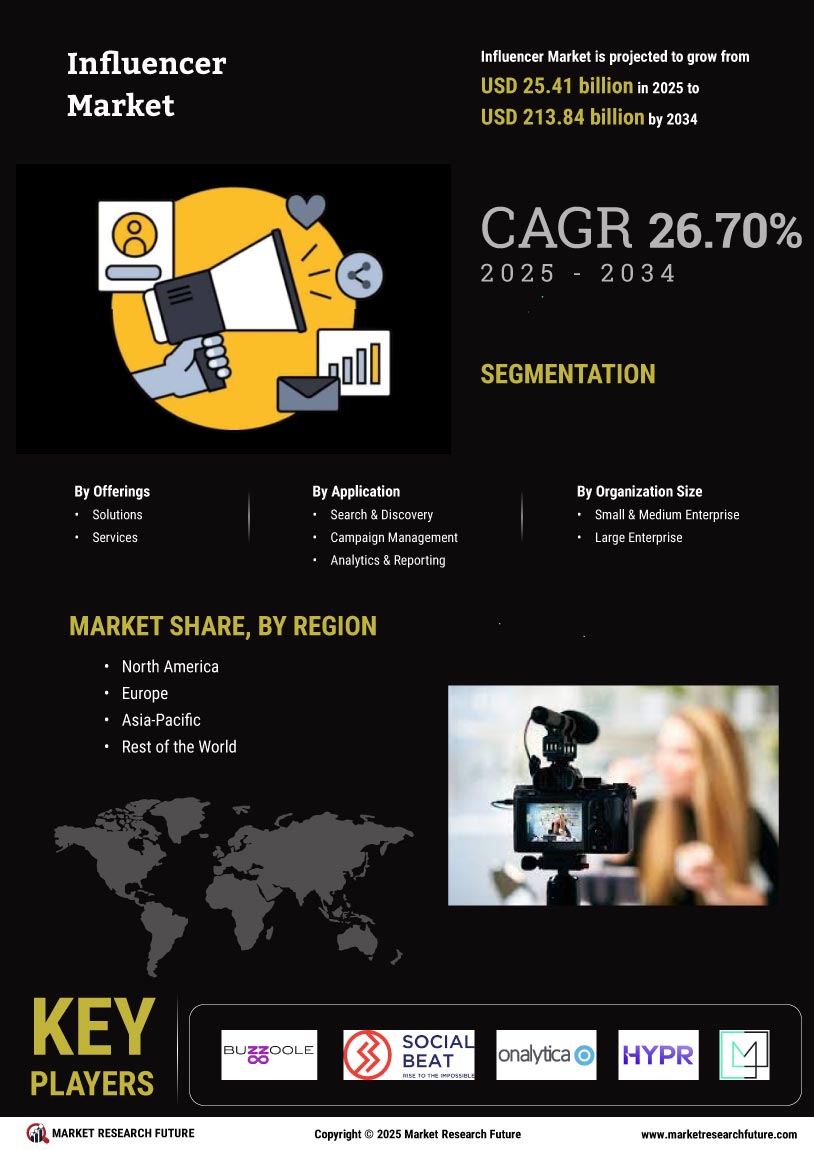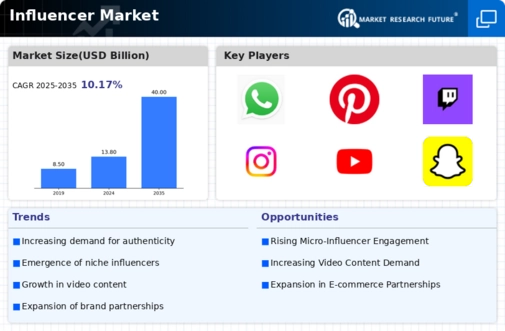Market Growth Projections
The Global Influencer Market Industry is poised for remarkable growth, with projections indicating a market value of 40 USD Billion by 2035. This anticipated expansion reflects the increasing recognition of influencer marketing as a vital component of brand strategy. The compound annual growth rate of 10.17% from 2025 to 2035 underscores the industry's potential for sustained development. As brands continue to invest in influencer partnerships, the market is likely to evolve, adapting to changing consumer preferences and technological advancements.
Rising Social Media Usage
The Global Influencer Market Industry is experiencing substantial growth due to the increasing penetration of social media platforms. In 2024, the market is valued at 13.8 USD Billion, reflecting the shift in consumer behavior towards digital engagement. As more individuals utilize platforms like Instagram, TikTok, and YouTube, brands are increasingly leveraging influencers to reach their target audiences. This trend indicates a potential for sustained growth, as social media usage is projected to continue rising. The ability of influencers to create authentic connections with their followers enhances brand loyalty, making them pivotal in marketing strategies.
Emergence of New Platforms
The emergence of new social media platforms is reshaping the Global Influencer Market Industry. Platforms such as TikTok and Clubhouse have gained immense popularity, providing fresh avenues for influencer marketing. These platforms cater to younger demographics, which are increasingly influential in consumer purchasing decisions. As brands explore these new channels, they are likely to adapt their strategies to align with platform-specific trends and user behaviors. This adaptability may drive further growth in the market, as influencers leverage these platforms to create engaging content that resonates with their audiences.
Diverse Influencer Categories
The Global Influencer Market Industry is characterized by a diverse range of influencer categories, including micro, macro, and mega influencers. Each category serves distinct marketing objectives, allowing brands to tailor their strategies effectively. Micro influencers, for instance, often boast higher engagement rates despite having smaller followings, making them valuable for niche marketing. This diversity enables brands to optimize their influencer marketing campaigns, potentially leading to increased market growth. As the industry evolves, the segmentation of influencers is expected to play a crucial role in shaping marketing strategies and driving revenue.
Shift Towards Authentic Marketing
There is a noticeable shift towards authentic marketing within the Global Influencer Market Industry. Consumers increasingly favor genuine content over traditional advertising, prompting brands to collaborate with influencers who resonate with their values. This trend is evident as brands seek to establish trust and credibility through influencer partnerships. As a result, the market is likely to expand, with projections indicating a growth to 40 USD Billion by 2035. Influencers who maintain authenticity in their messaging are more likely to engage their audiences effectively, thereby driving brand awareness and sales.
Increased Investment in Influencer Marketing
Investment in influencer marketing is on the rise, significantly impacting the Global Influencer Market Industry. Brands are allocating larger portions of their marketing budgets to influencer collaborations, recognizing the effectiveness of this strategy in reaching targeted demographics. This trend is likely to contribute to a compound annual growth rate of 10.17% from 2025 to 2035. As companies continue to prioritize influencer partnerships, the market is expected to flourish, with more brands seeking innovative ways to engage consumers through influencer-driven campaigns.























